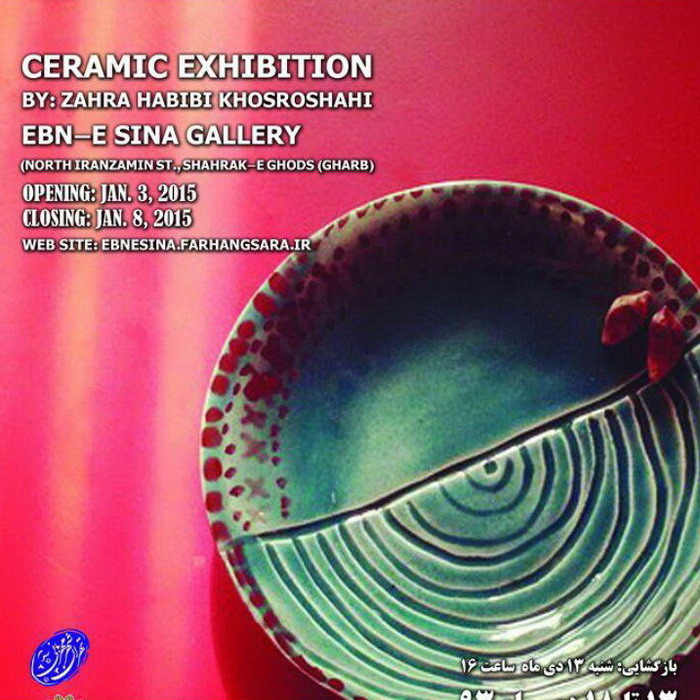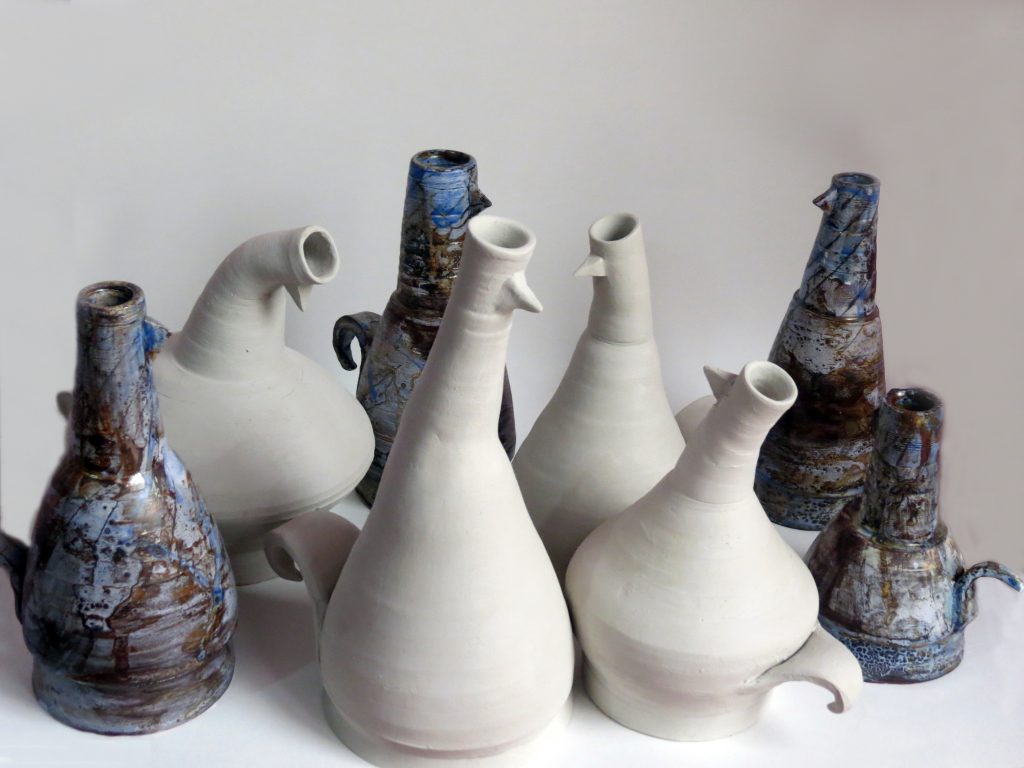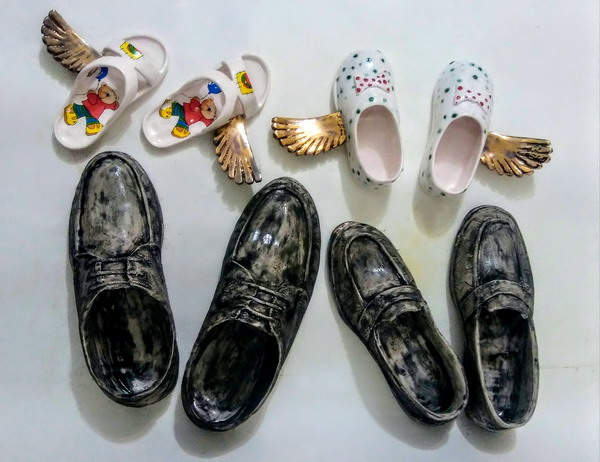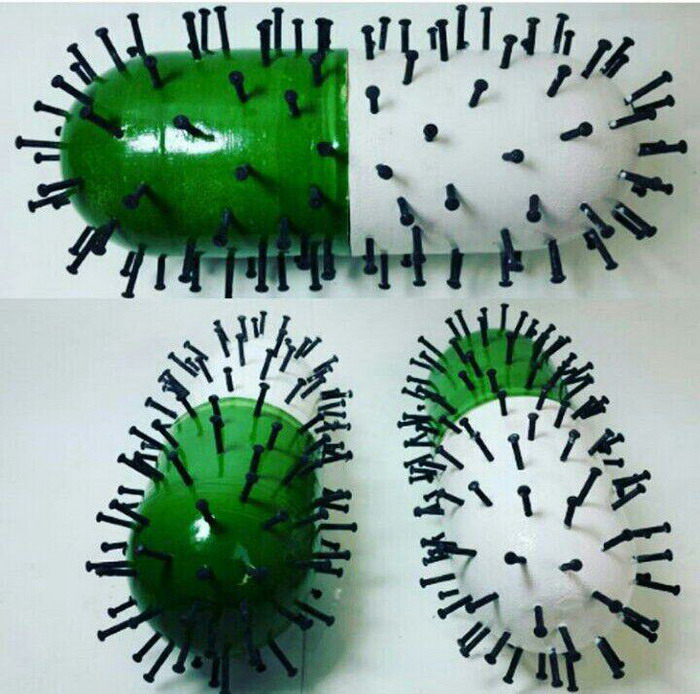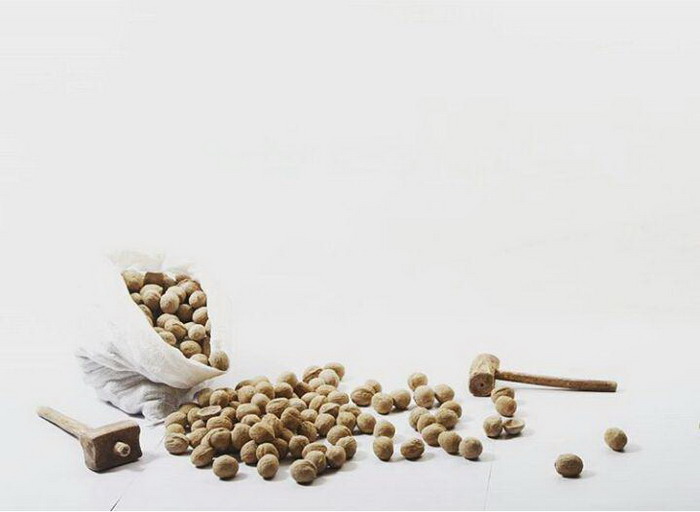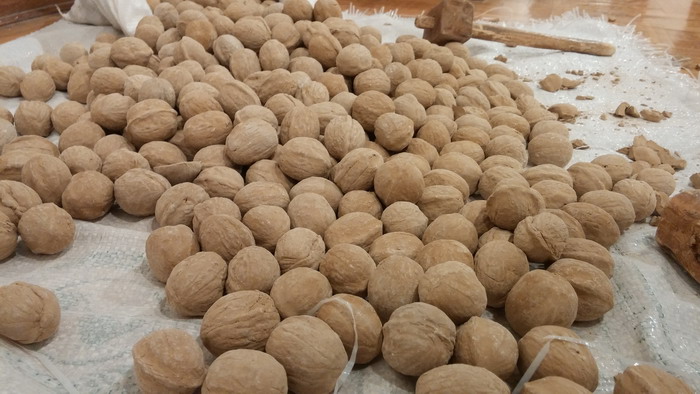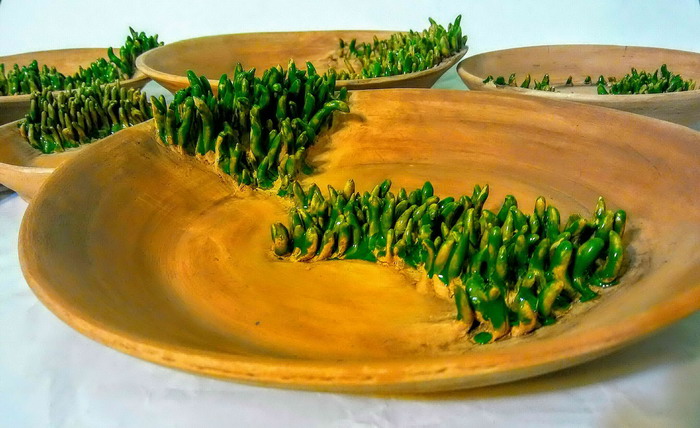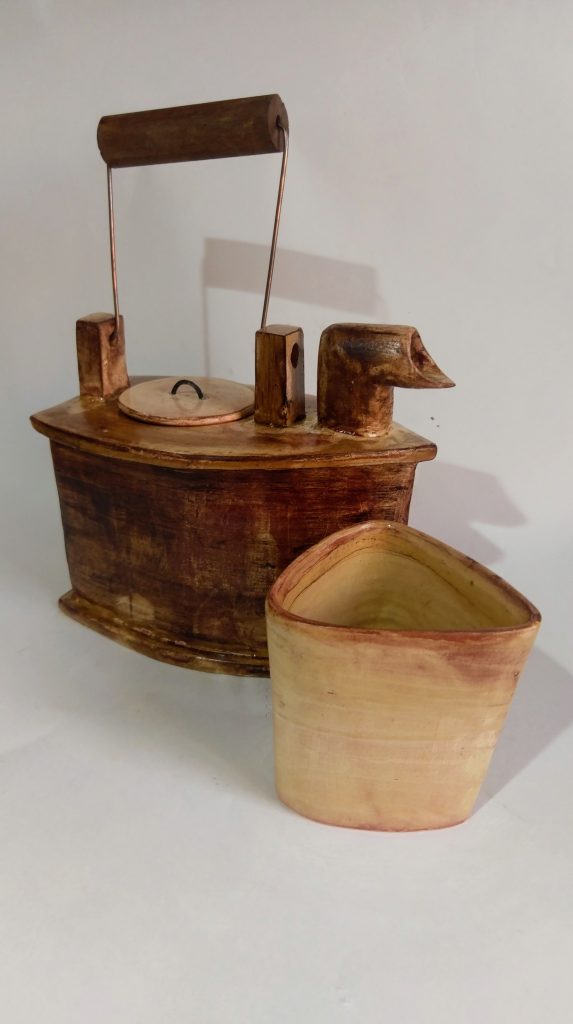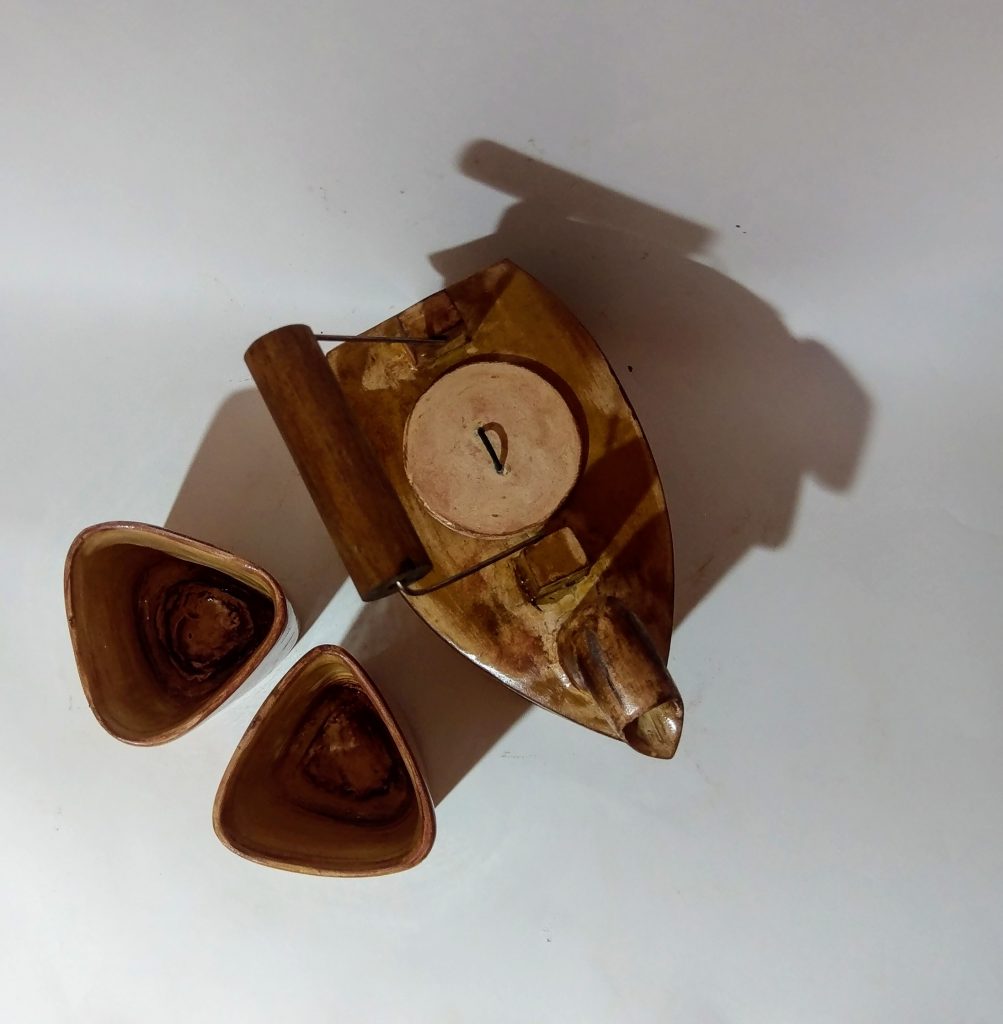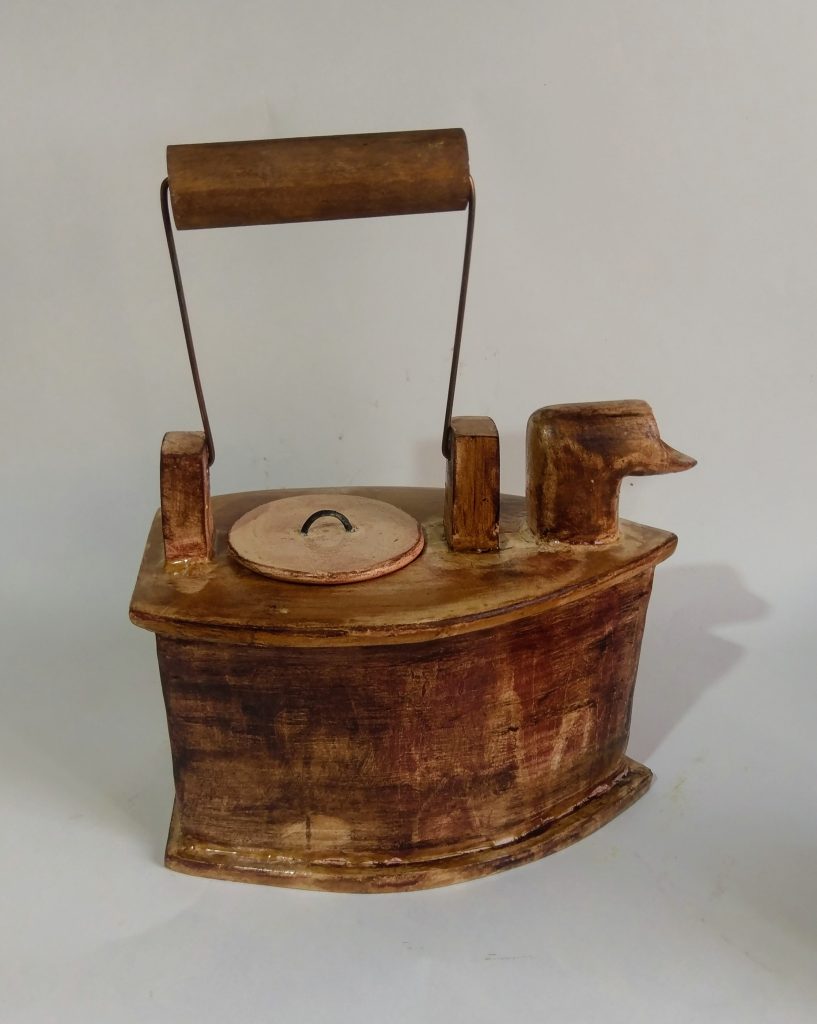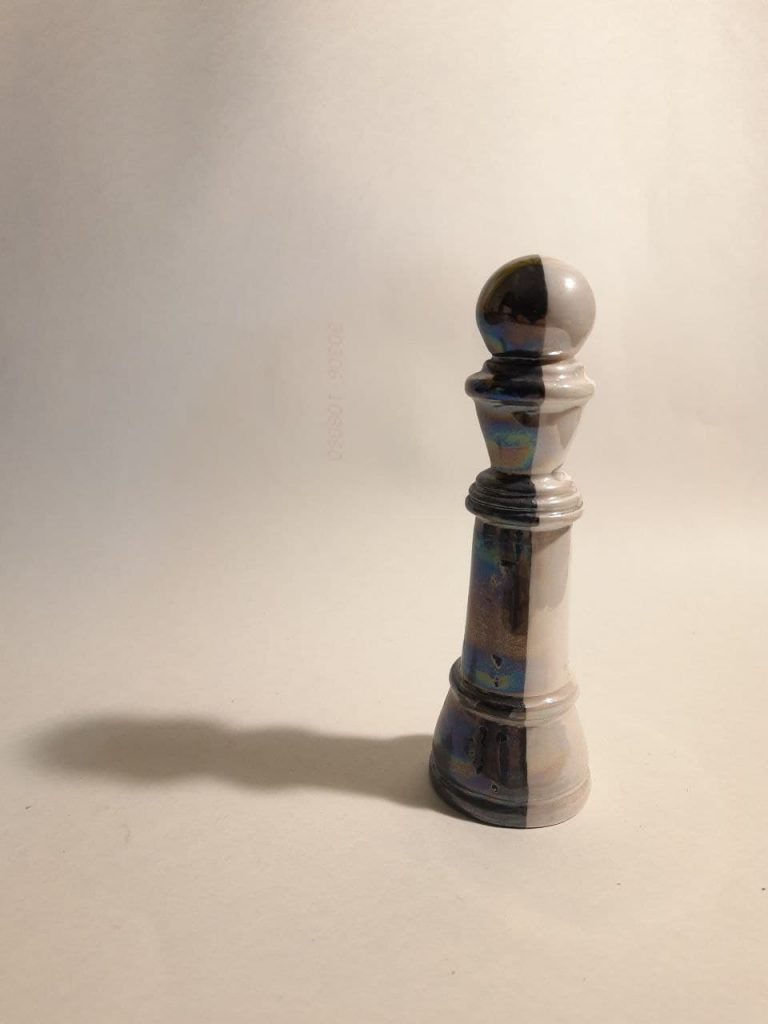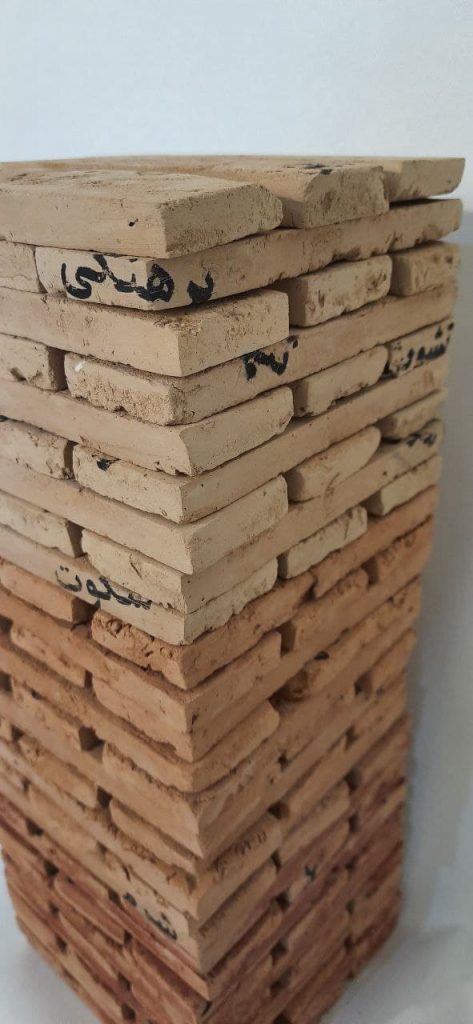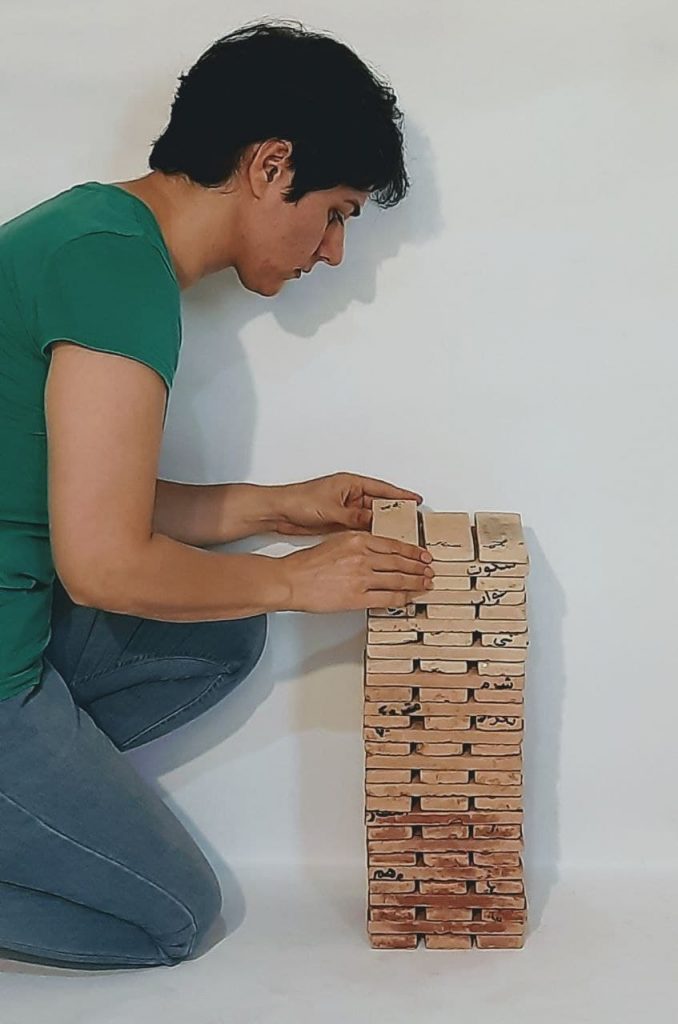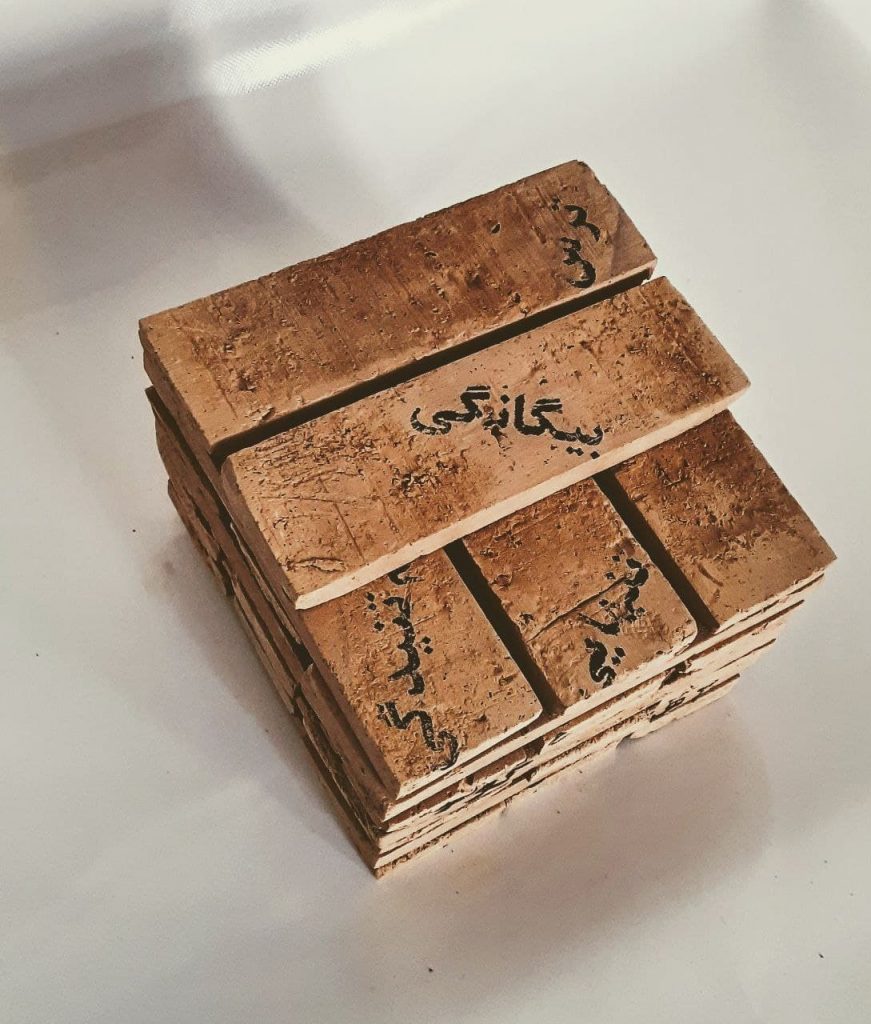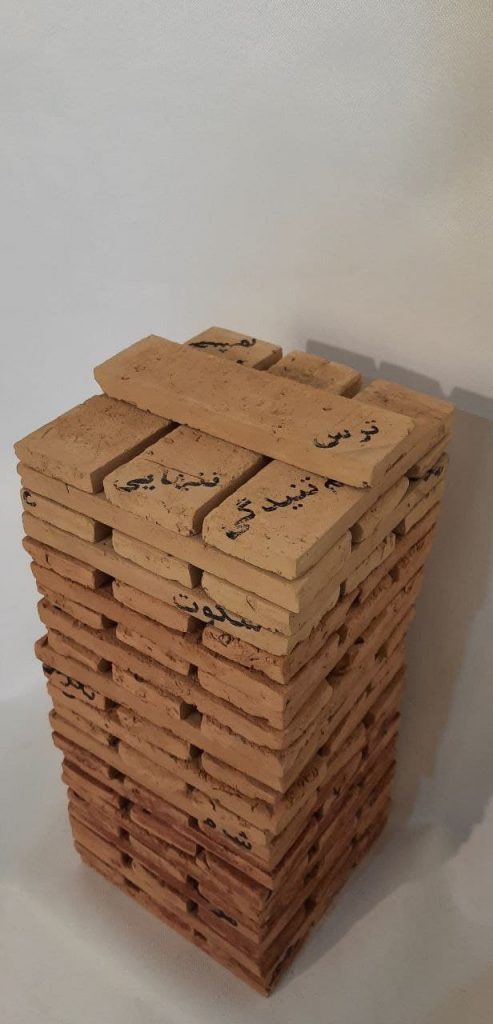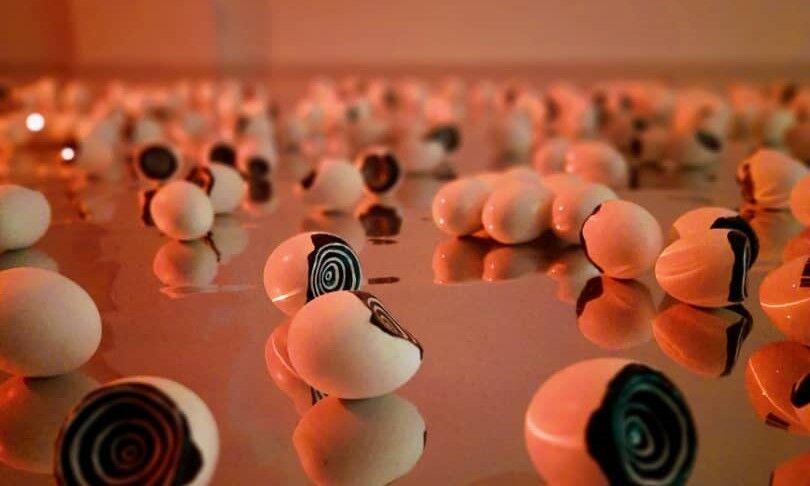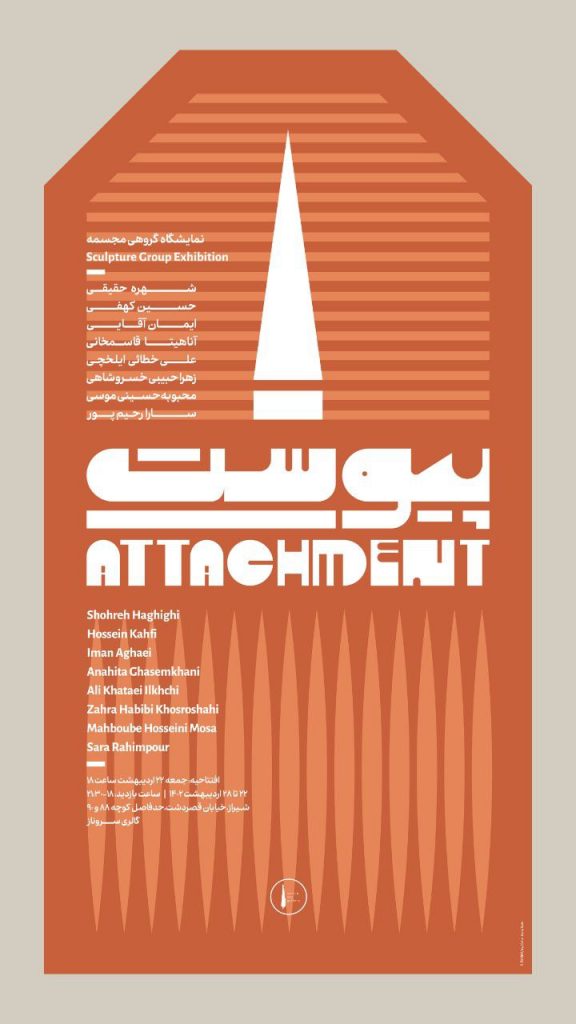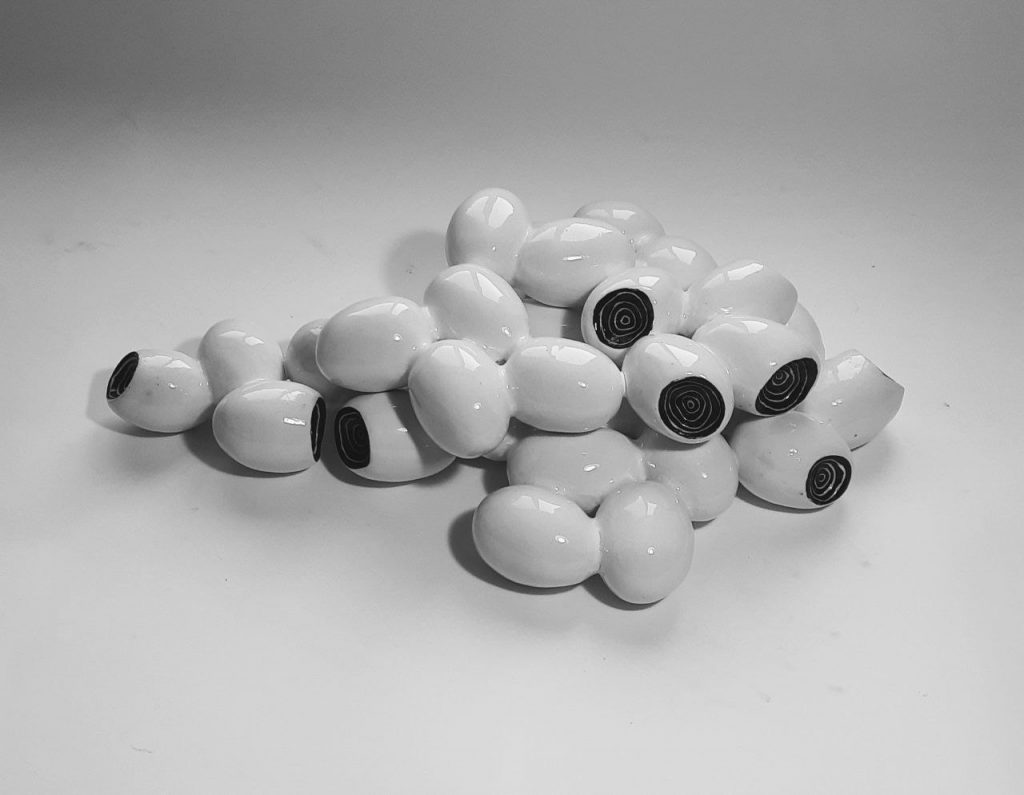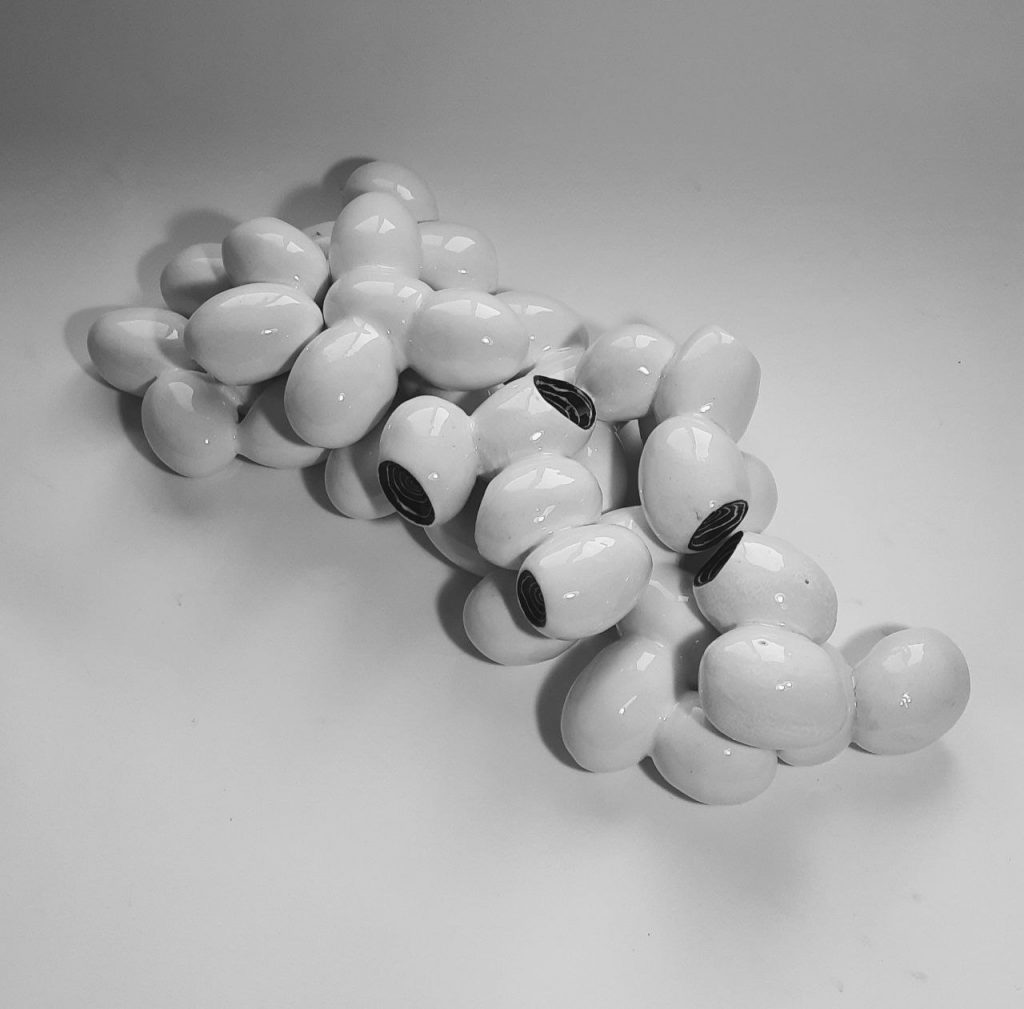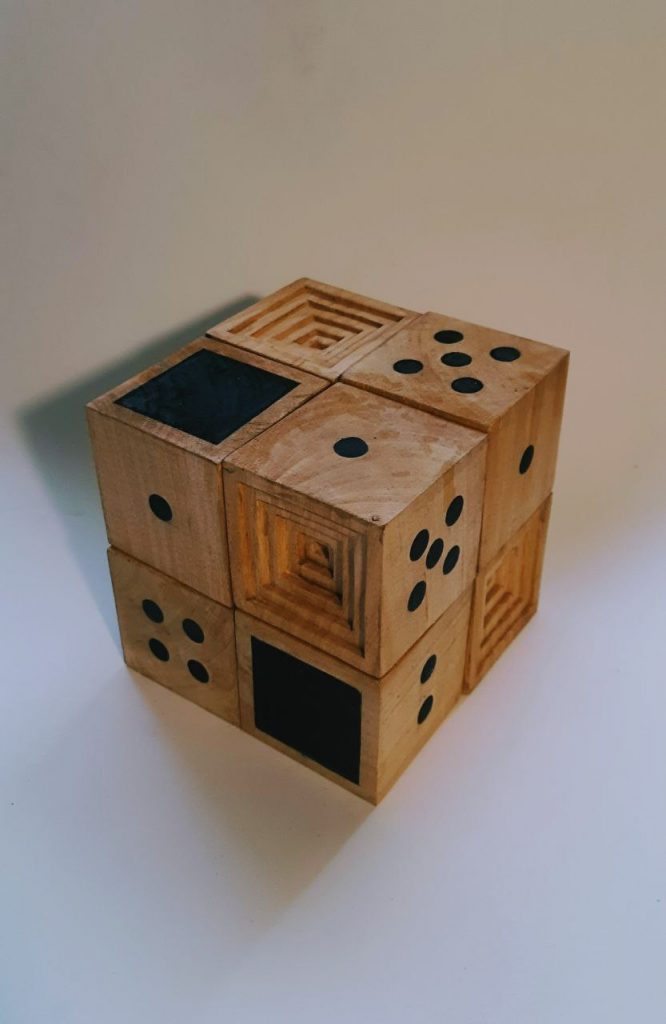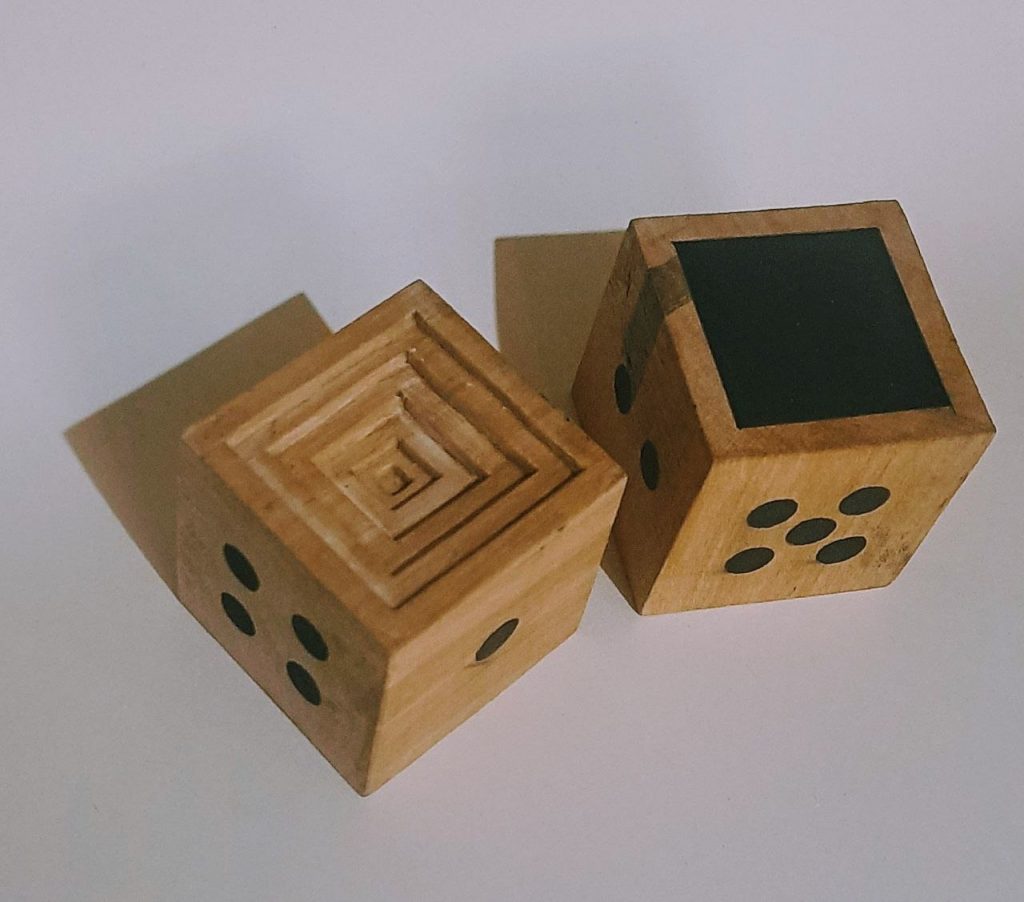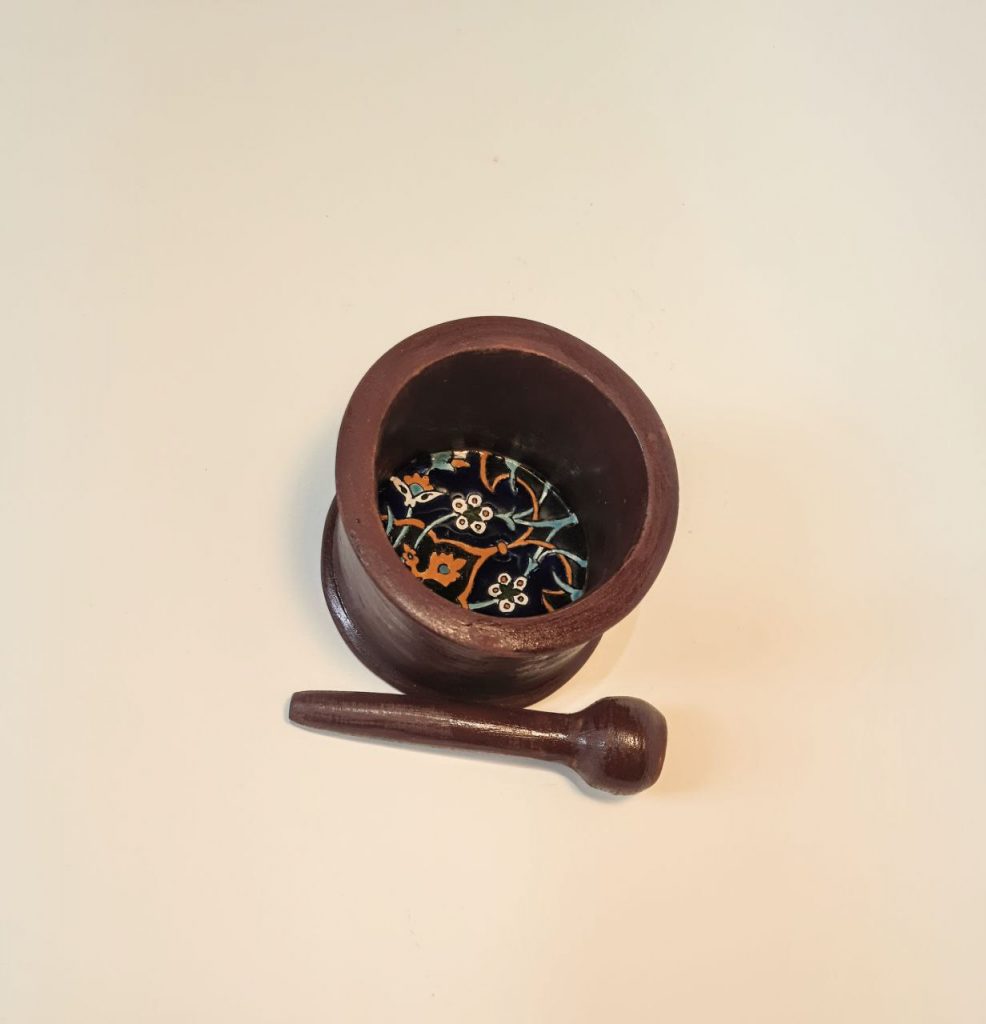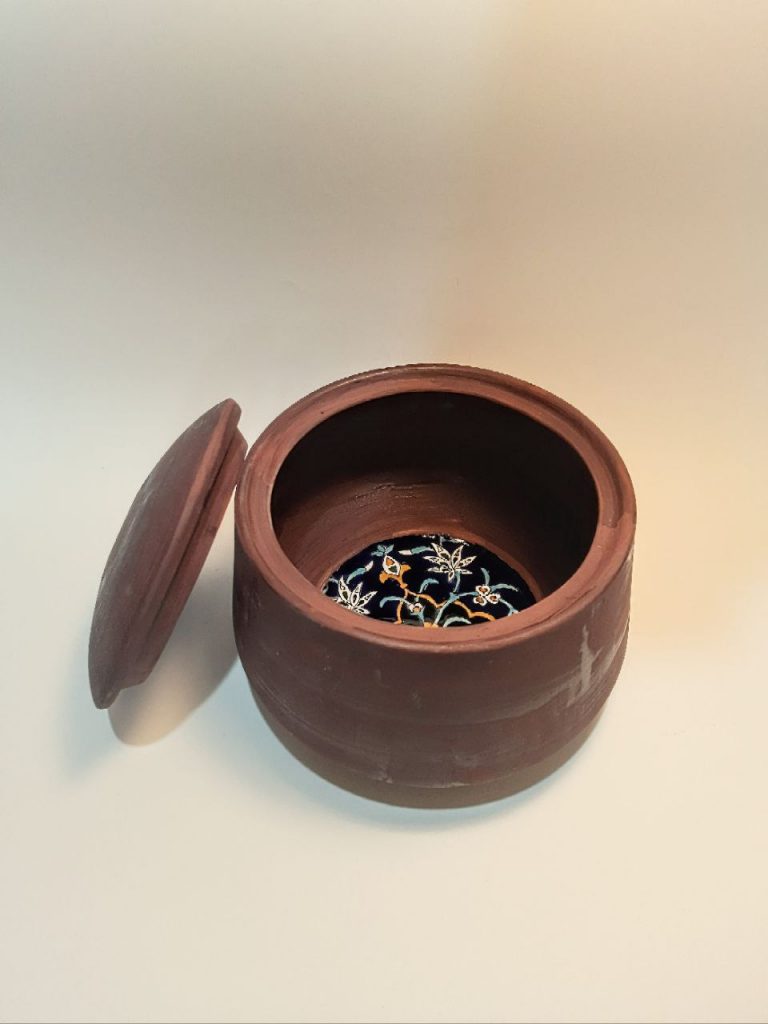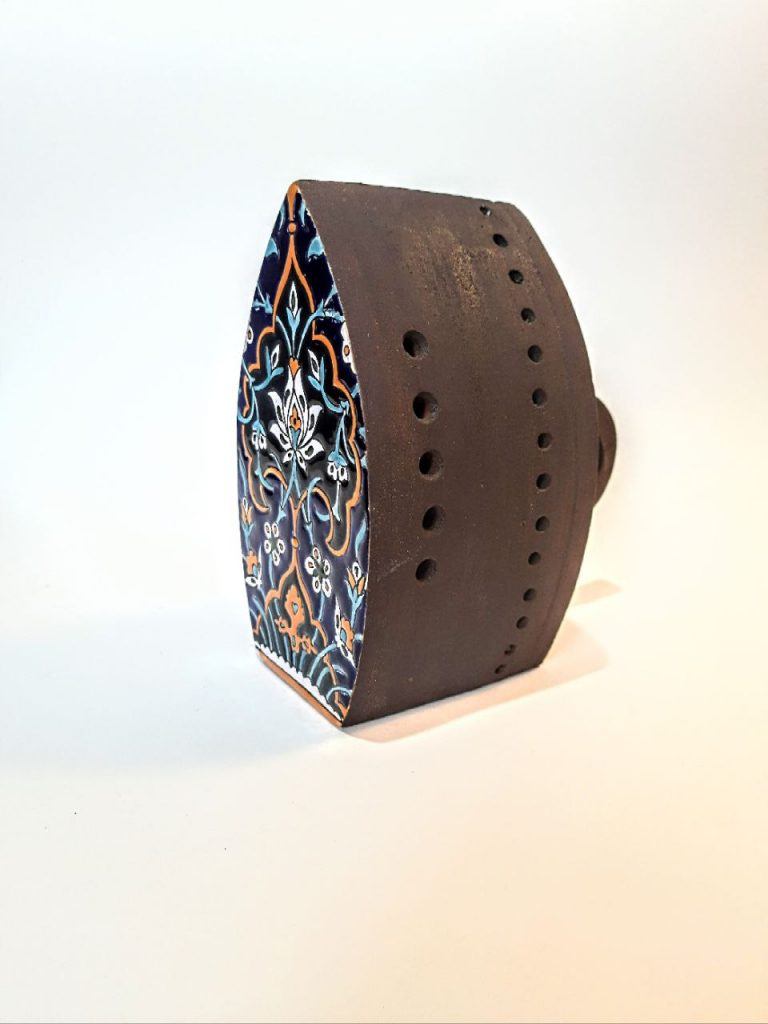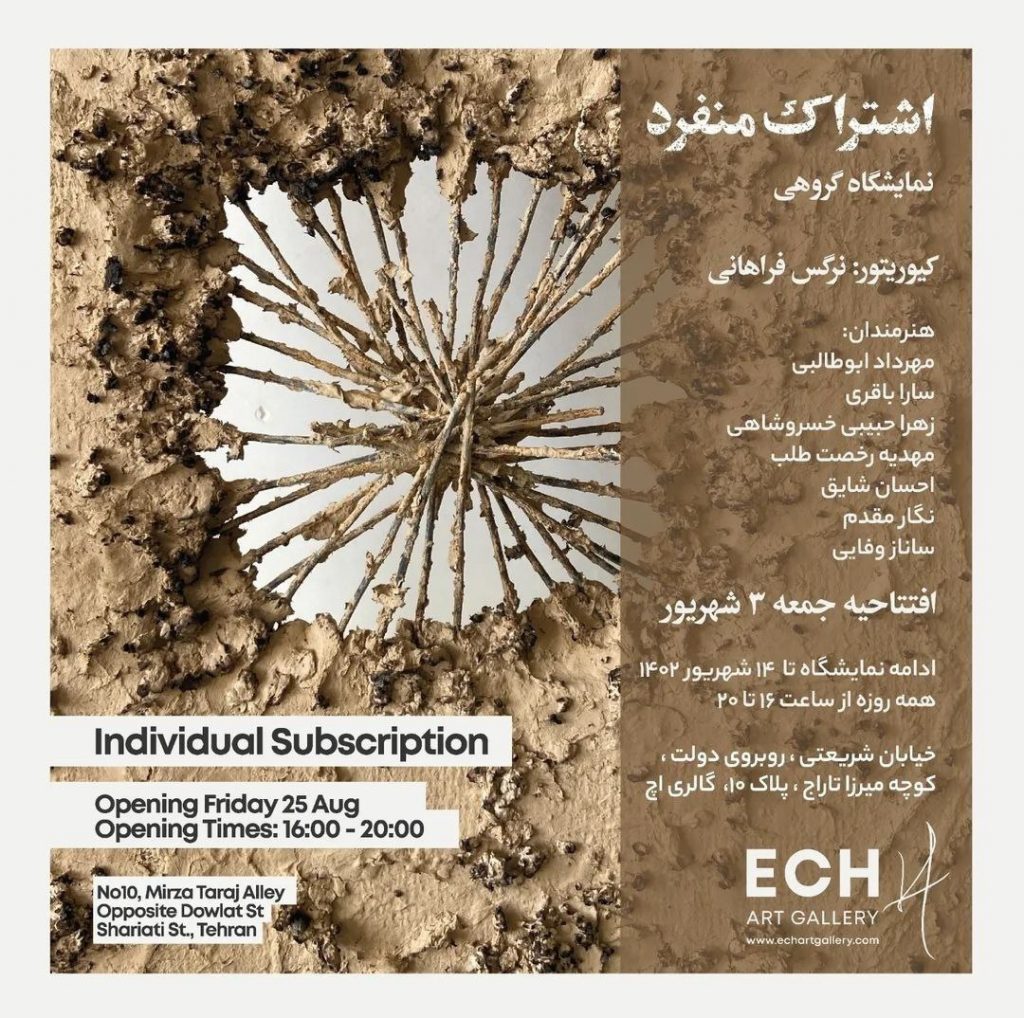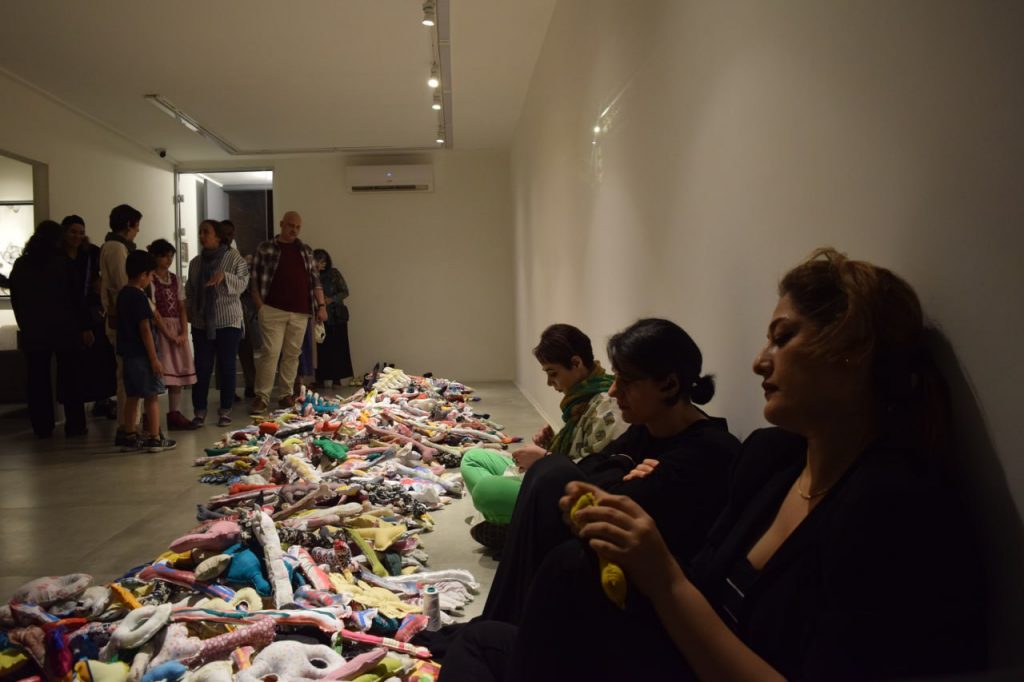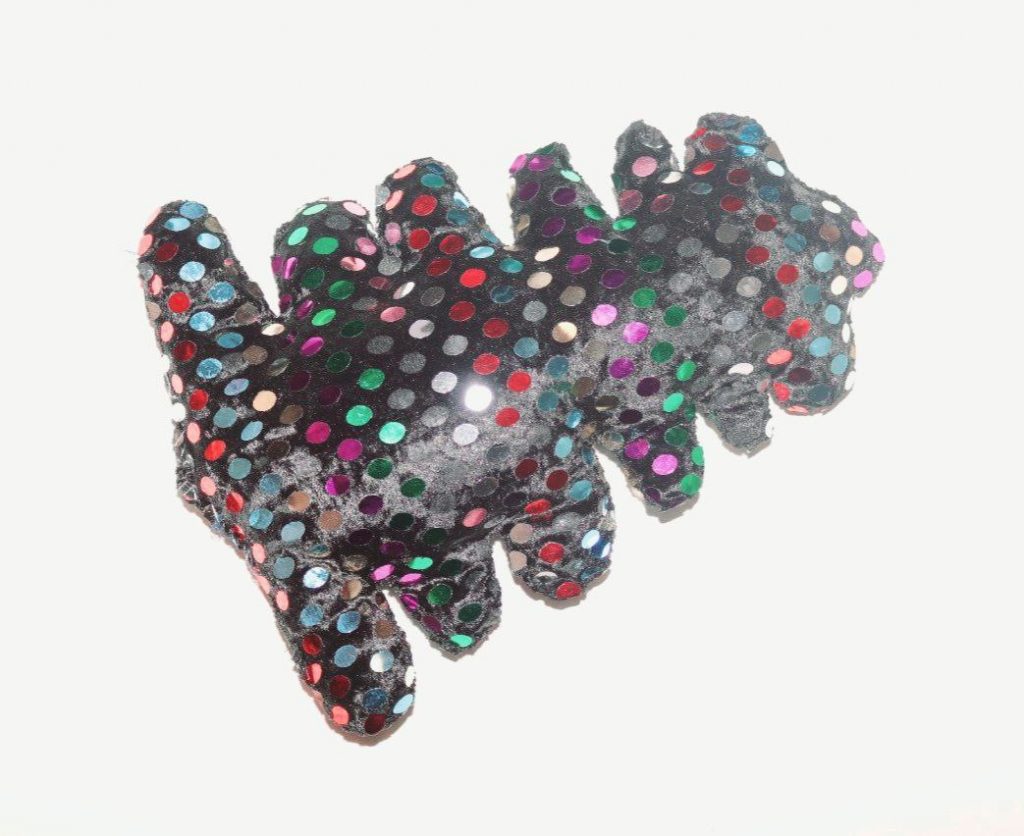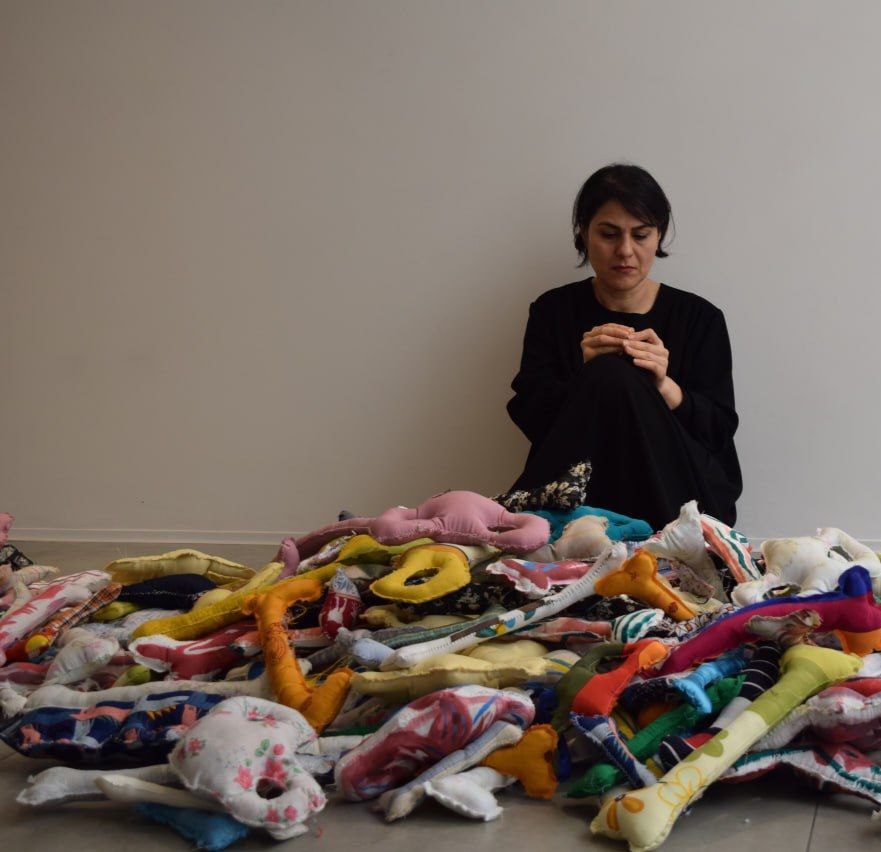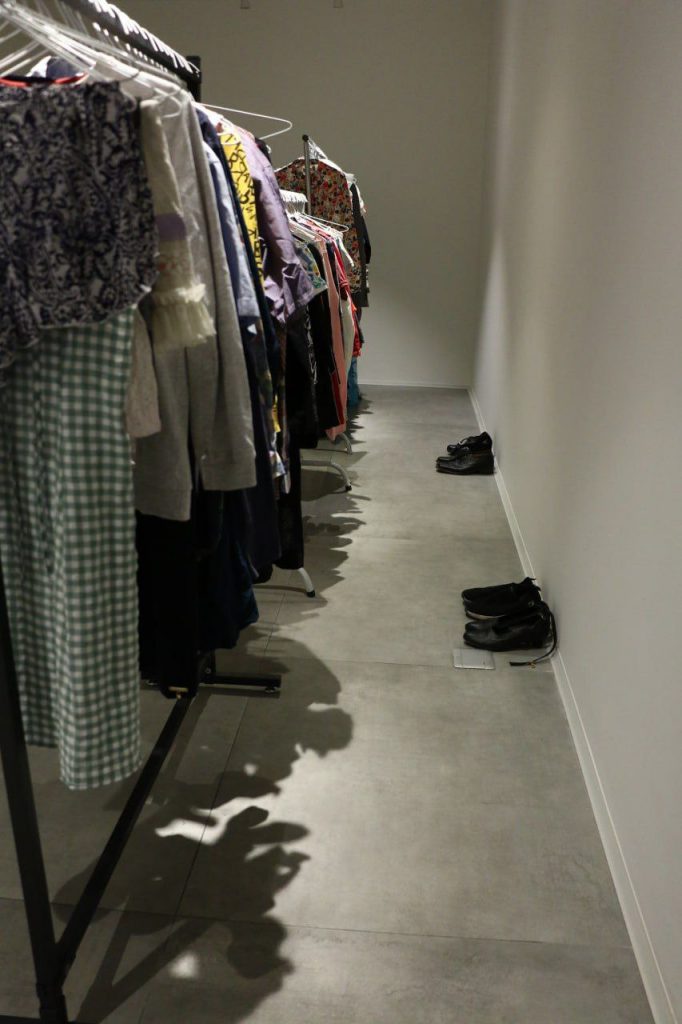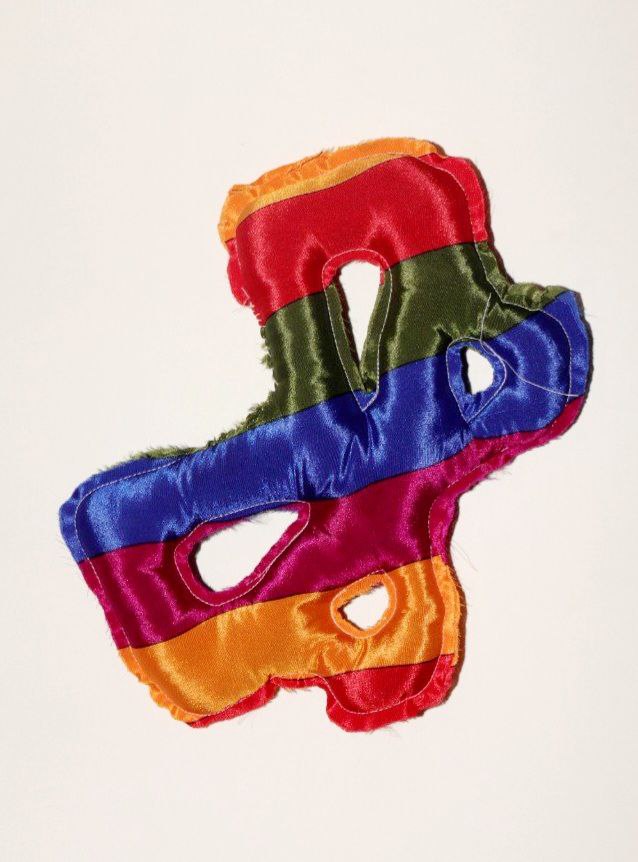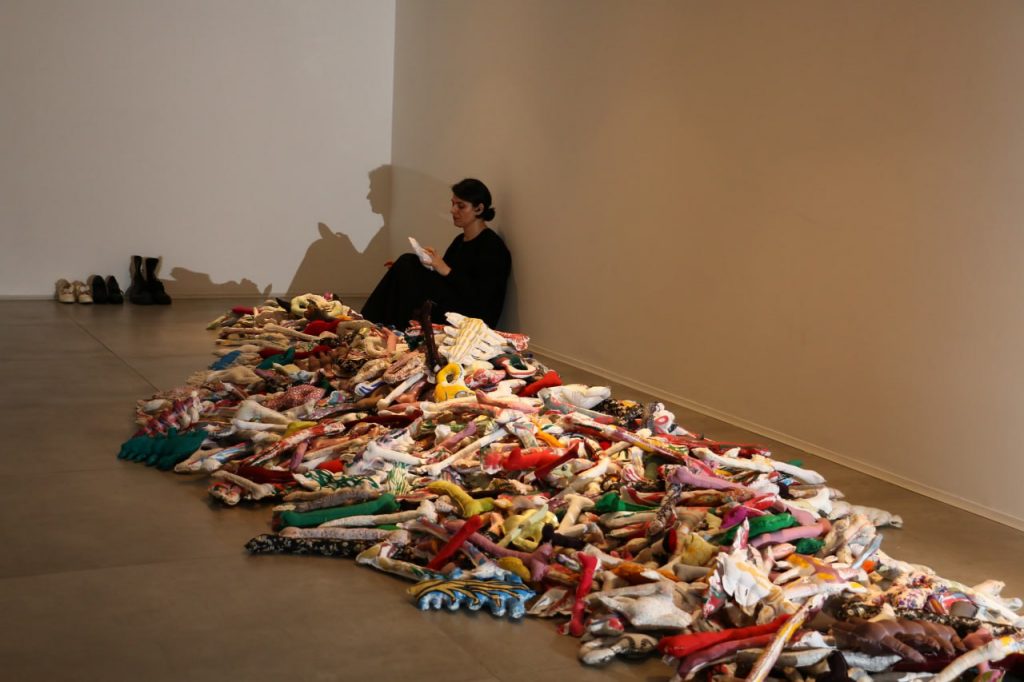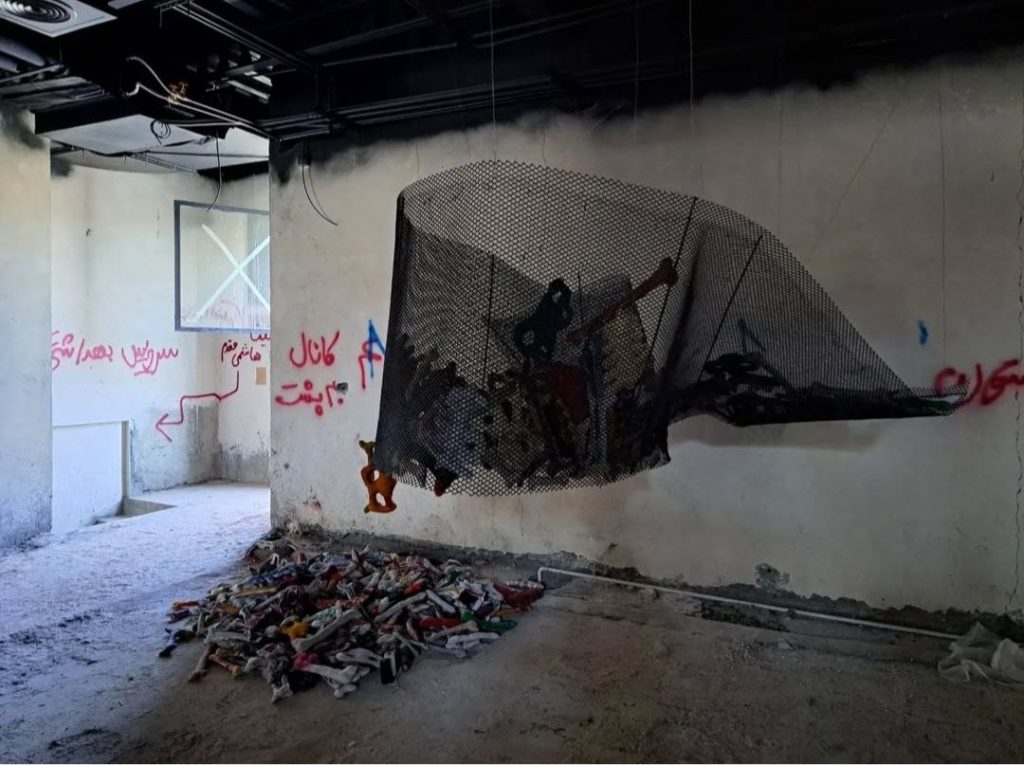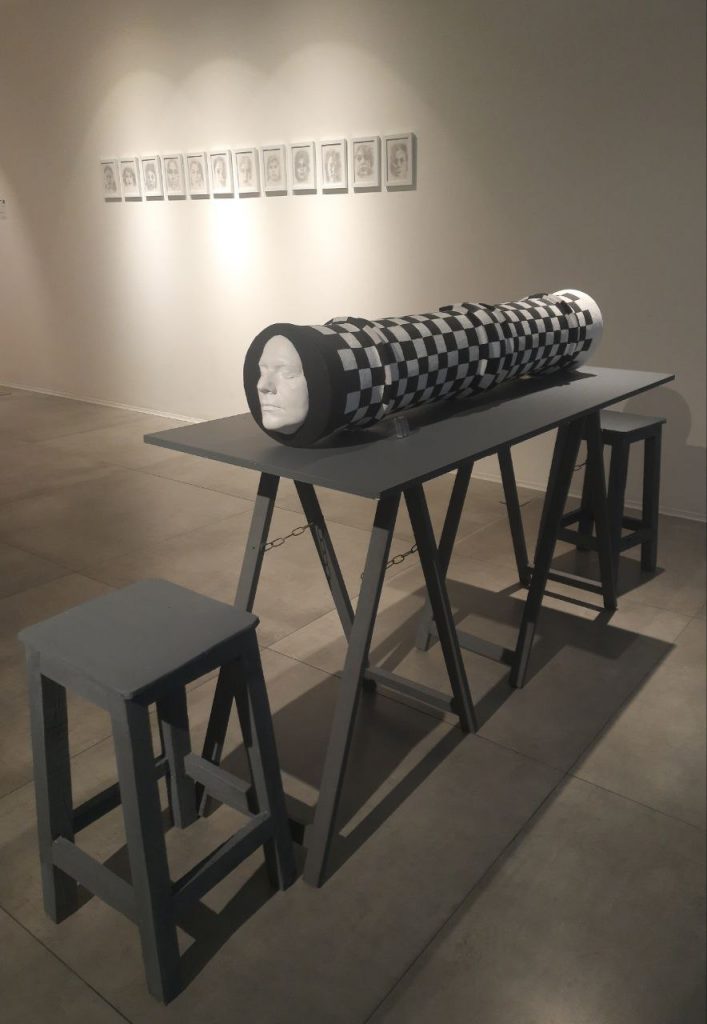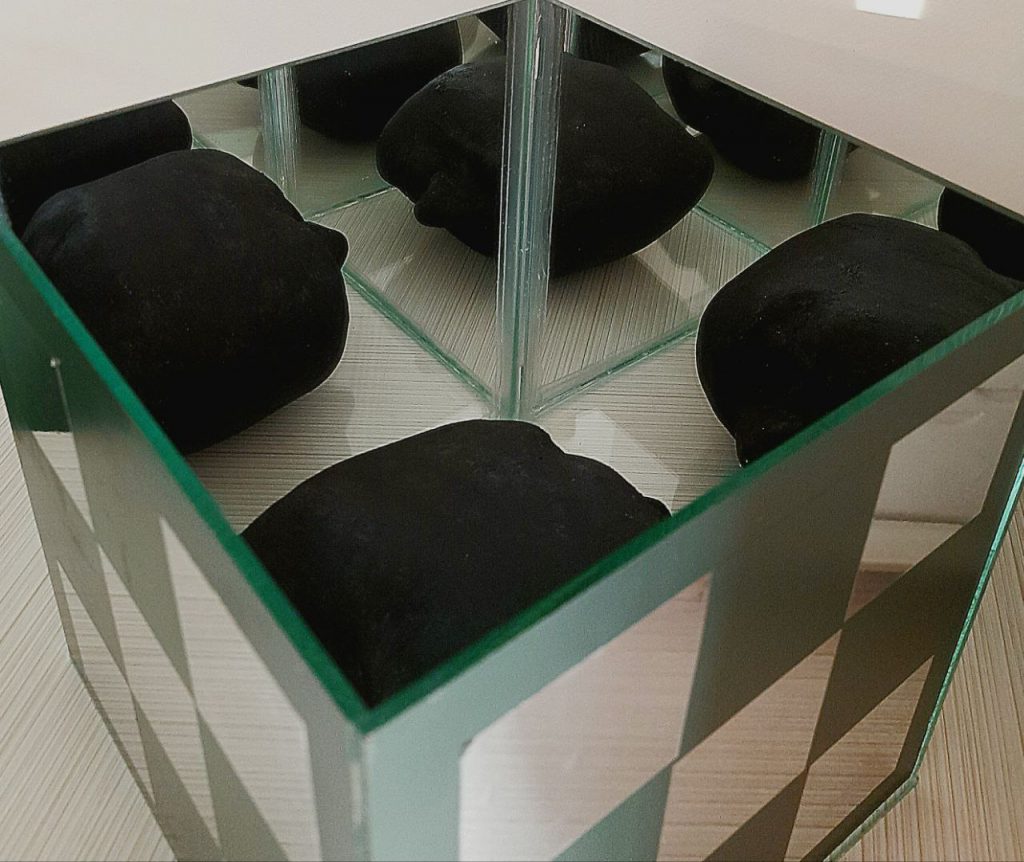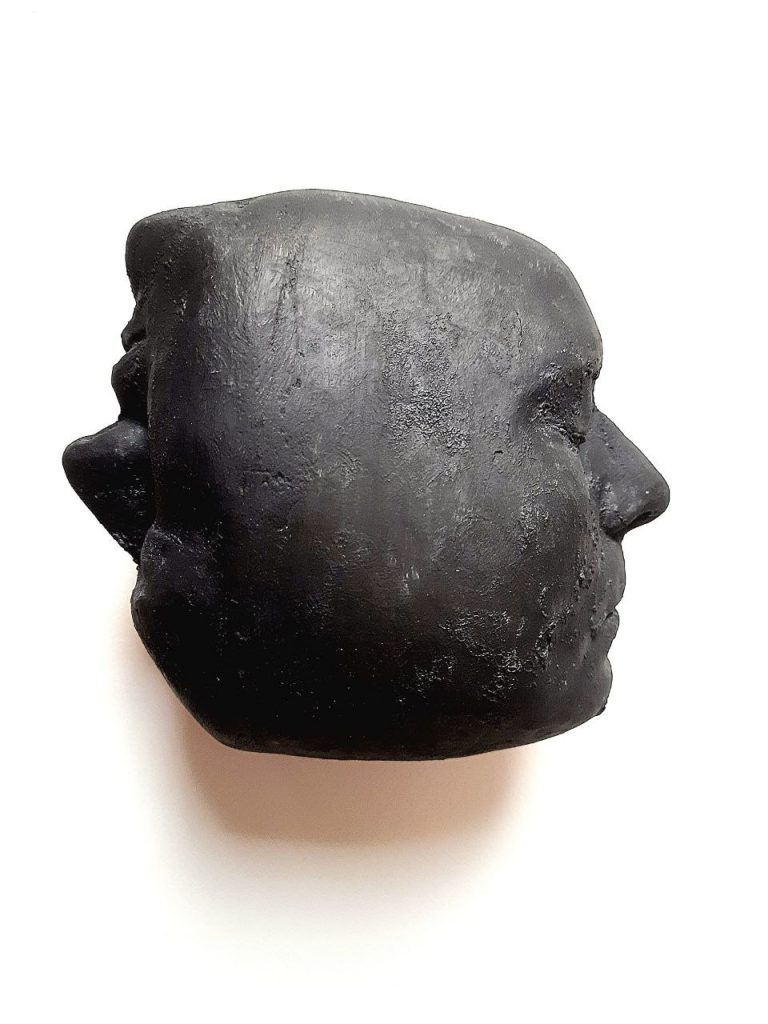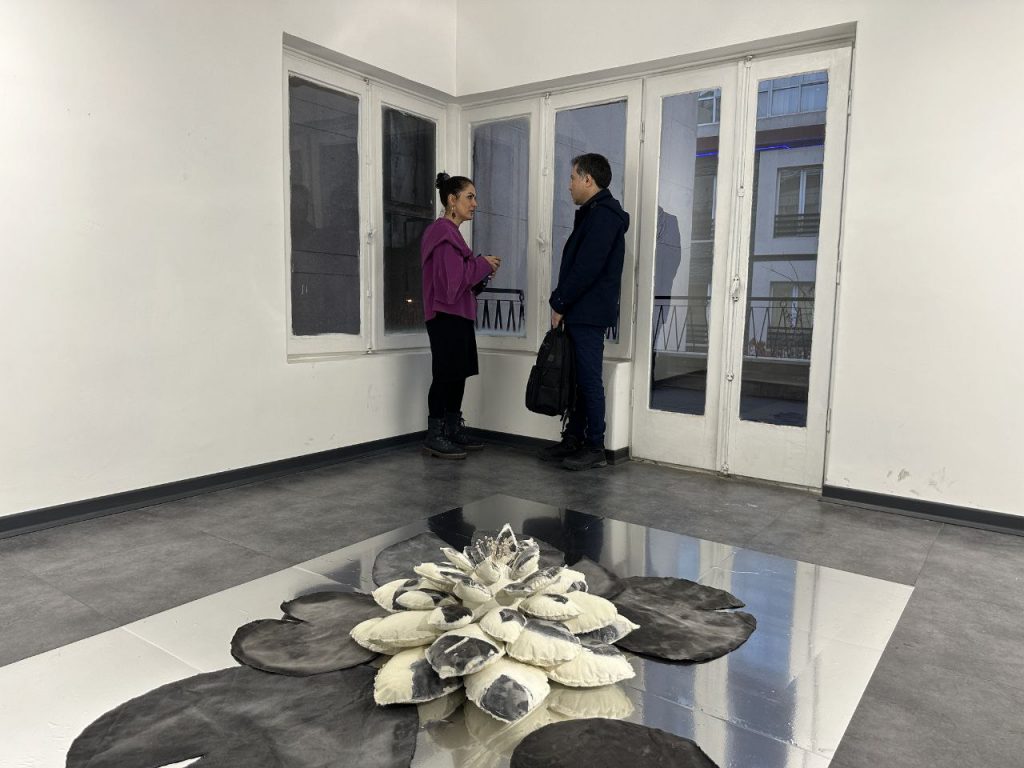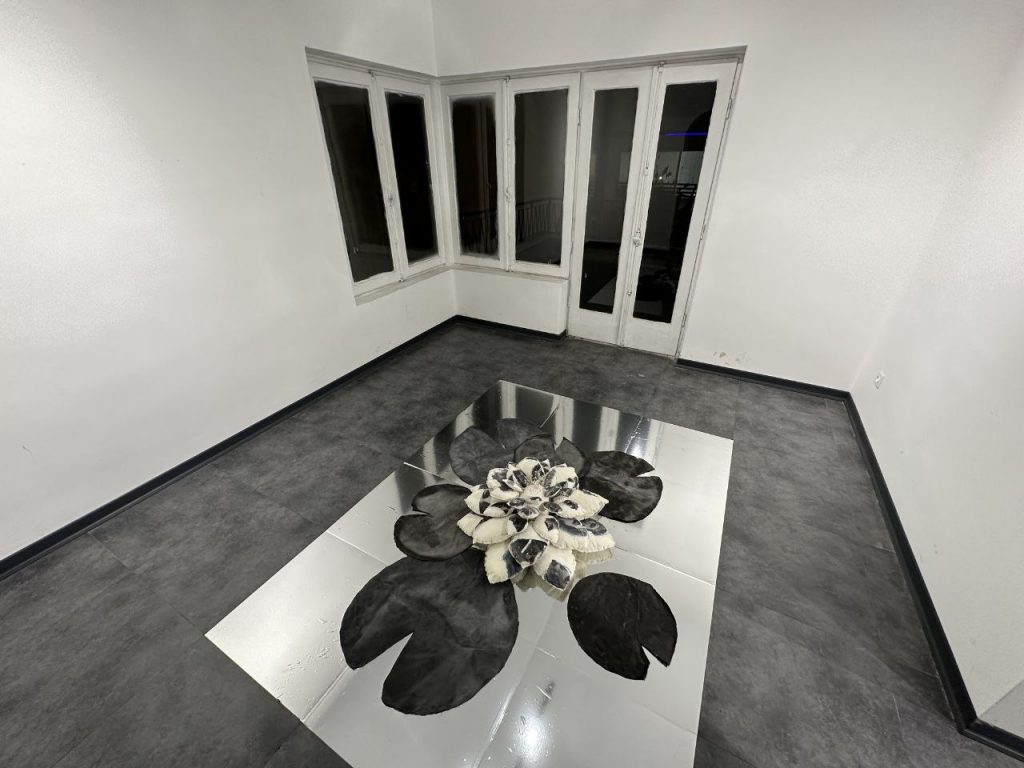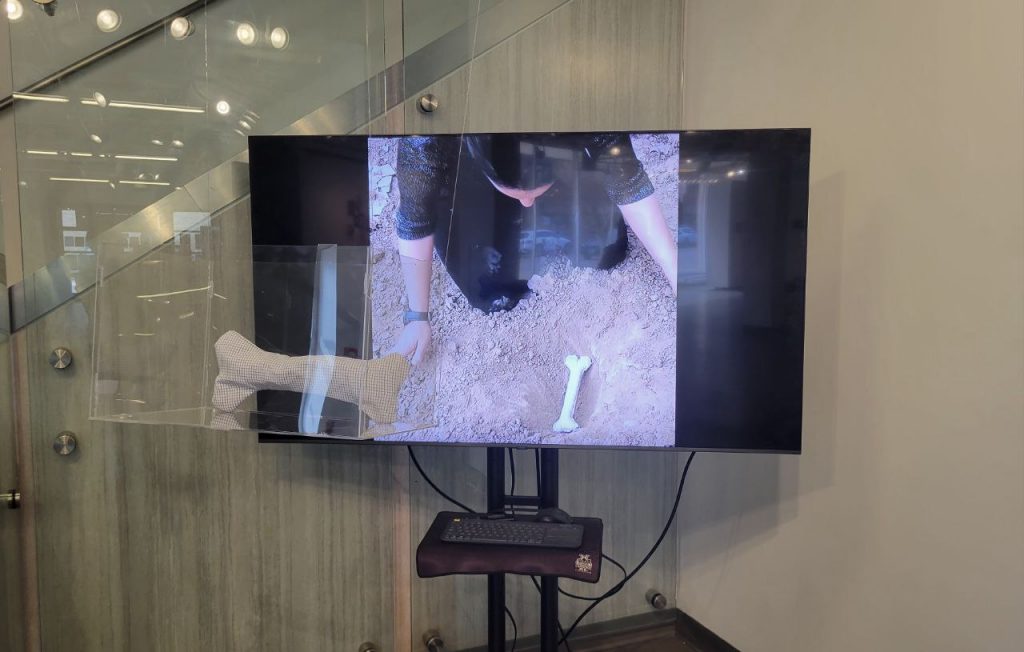1. Ebne Sina Gallery (Solo Exhibition) – Tehran – Iran – 2015
2. Koodaki (Childhood) Group Exhibition – Tehran – Iran – 2015
I remember my parents’ shoes always were laughing. Just the moment I flew in my shoes … When I was a child, my father’s old clothes were still good and my mother always not hungry. Her morsels were on my plate but she had not eaten before. I remember my parent’s shoes always had a pure smile to make the dreams of my shoes come true.
3. The 7th Fajr International Visual Arts – Iran – 2016 & Izmir Rotary Kulubu – Turkey – 2016
Pain Killer
4. Shekastani (The Breakable) Group Exhibition – Niavaran Art Gallery – Tehran – Iran – 2016
I know women from the land of walnut who sell bags full of walnuts with their broken hours just for small price. They are broken and break because of nothing.
5. Nafas Festival – Iranian Artists Forum – Tehran – Iran – 2016
Cell Proliferation
6. Mattress Festival – Group Exhibition – Italy – 2020
7. Dystopia – 11th Ceramics Biennial – Niavaran Art Gallery – Tehran – Iran – 2020
8. VAYU Residency – Kashan – Iran – 2021
https://vayuresidency.org/
https://www.instagram.com/vayuresidency/
9. Eggo Solo – Vali Art Gallery – Tehran – Iran – 2022
https://www.valiartgallery.com/fa/aboutus
https://www.instagram.com/vali.gallery/
10. The Last Position – Solo Exhibition – Iranian Art Forum – Tehran – Iran – 2022
https://www.instagram.com/tv/Cd3OuRyFHCk/?igshid=NTc4MTIwNjQ2YQ==
11. The Fishes Will Not Stay In Tight – Group Exhibition – Tehran – Iran – 2023
12. Attachment – Group Exhibition – Sarvenaz Art Gallery – Shiraz – Iran – 2023
13. Individual Subscription – Group Exhibition – ECH Art Gallery – Tehran – Iran – 2023
14. Sougvareh – Solo Exhibition – Jaleh Art Gallery Tehran – Iran – 2023
The concept of anonymity and namelessness in graves and clothing that are called forth from nowhere to the world of Zahra takes us to the depth of a wounded wound, which mothers experience in burying the pieces of their body. The artist brings forth a colorful range of suffering through forty pieces of fragmented body. These bones are not meant to be bound with soil, but rather they are meant to stir a disturbing question, like a wounded wound sitting in filth; where are these pieces of body? The use of feminine materials and the three-dimensionality of the forty two-dimensional pieces alongside the performative aspect of Zahra’s work seemingly creates an extension of mourning. It delves inward and takes root in the depths, bringing forth a fountain and cry in the form of a new artistic work. Zahra remains silent and, like grieving mothers, clenches her teeth on her liver, and she creates her fragmented bones like handcrafted dolls. Those bones, those small silent dolls, come together and are buried in the soil to be unearthed multiple times and expose bare bones, repeating the absence of a missing body.
15. Maan Group Exhibition – Didar Art Gallery – Tehran – Iran – 2023
Metrodorus, the first disciple of Epicurus, has chosen the title of a chapter in his book as follows: “The wounds that enter our happiness from within are much deeper than those that come from without.” It is an obvious and undeniable reality that the essential element for human happiness, and indeed for all aspects of his life, lies in what is within him or flows through his being. The direct source of his deep contentment or discontent arises from his feelings, desires, and thoughts; it is here that it originates, whereas everything outside of him only affects him indirectly. For this reason, identical external events or relationships have completely different effects on each person, and individuals live in entirely different worlds even in the same environment, because a person only perceives his own thoughts, feelings, and will directly, while external factors influence him solely through these.

16. Qaaf Group Exhibition – Amanatdari Art Gallery – Rasht – Iran – 2023
The letter “Q” is the twenty-fourth letter of the Persian alphabet, and its name is “Qaf.” In legends, “Qaf” is thought to be a mountain upon which the Simurgh builds its nest. “Q” is a presentation of three works selected by Mitra Soltani, based on her contemporary reading of the story of “Manṭiq al-ṭayr” (The Conference of the Birds) by Attar. This time, the birds are in search of the Simurgh again, but with the difference that they now recognize the Simurgh.
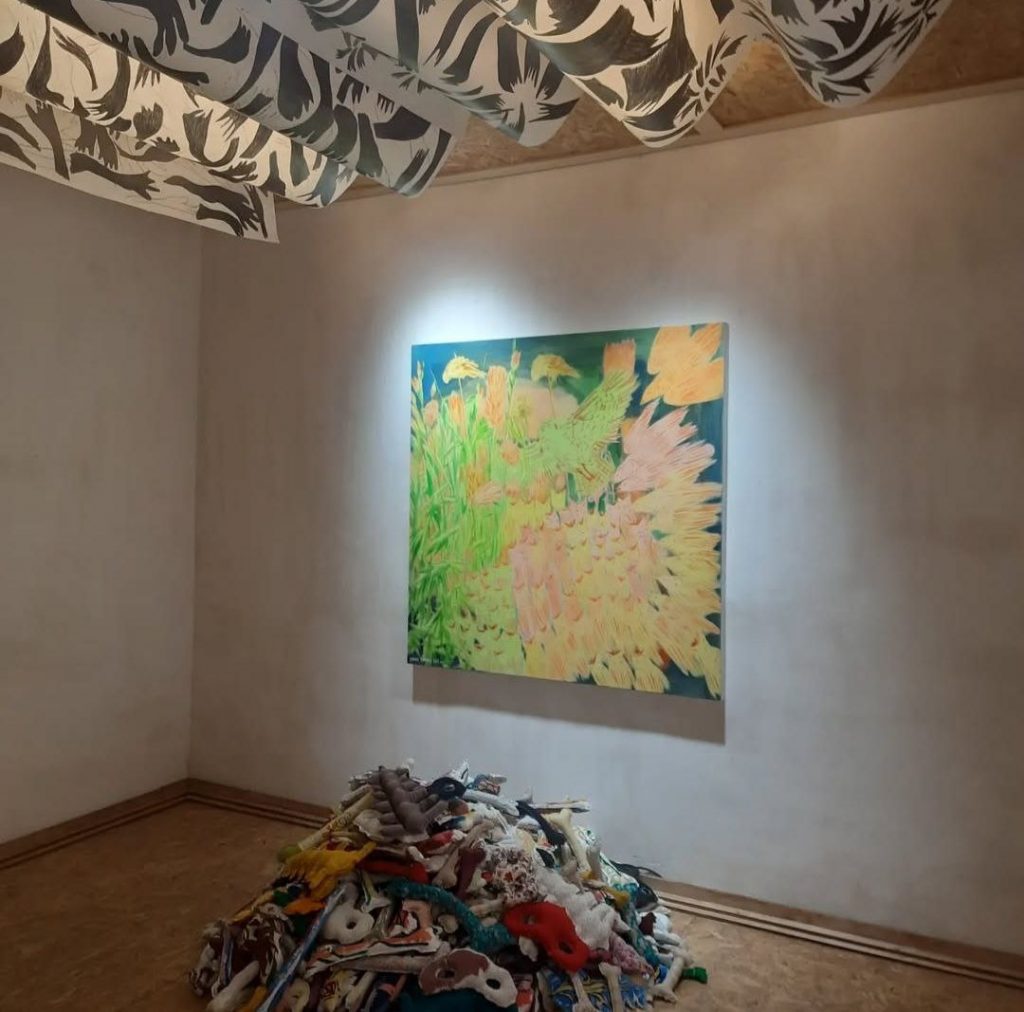
17. Reflection Group Exhibition – Shamis Art Gallery – Tehran – Iran – 2023
The impact of women, regardless of their social position, can sometimes be pronounced and intense, and at other times subtle and gradual. Undoubtedly, this occurs despite the desires of the ruling class. The feminine agency intended in this form of expression has long been overlooked in a male-dominated, misogynistic society, yet it is consciously or unconsciously in the process of becoming.
18. Tik Tak Group Exhibition – Yafteh Art Gallery – Jajroud – Iran – 2024
(The structure is inspired by the Zoroastrian towers of silence called “Dakhma.”). Nothingness is pure negation. It seems that nothingness is something (is) that possesses this and that characteristic of being and not being. Heidegger says: “Nothingness means nothing.” And this nothingness is a bone. I always carry a number of bones with me. I bury a piece of bone in a pit and mark the spot.
19. Don’t Smile, You Are on Camera – Solo Exhibition – Jaleh Art Gallery – Tehran – Iran – 2024
“Don’t smile. You’re on camera. The body, without any intermediary, from the beginning of the first experience of contact with the surroundings, gives shape and form to our world in a malleable way. Beyond the changes imposed on the body by factors such as time, gender, geography, politics, society, ethnicity, and so on, the inner world is also constantly changing and evolving in the face of external factors (sometimes other bodies).
So our perception of the world is an understanding that we receive through our bodies, when we see or perhaps when we put ourselves in someone’s place.
We are common bodies that can be an extension of each other’s memories or understanding of suffering.
20. Dorj Group Exhibition – Artibition Gallery – Tehran – Iran – 2024
A pin is a situation in chess where one piece, known as the “pinned piece,” is forced to remain in place to defend another valuable piece or square. The term “pin” comes from Turkish, meaning “it does not open” or, more simply, “blocked” or “nailed down.”
21. Fall Leaf Festival – Tehran Art University – Tehran – Iran – 2024
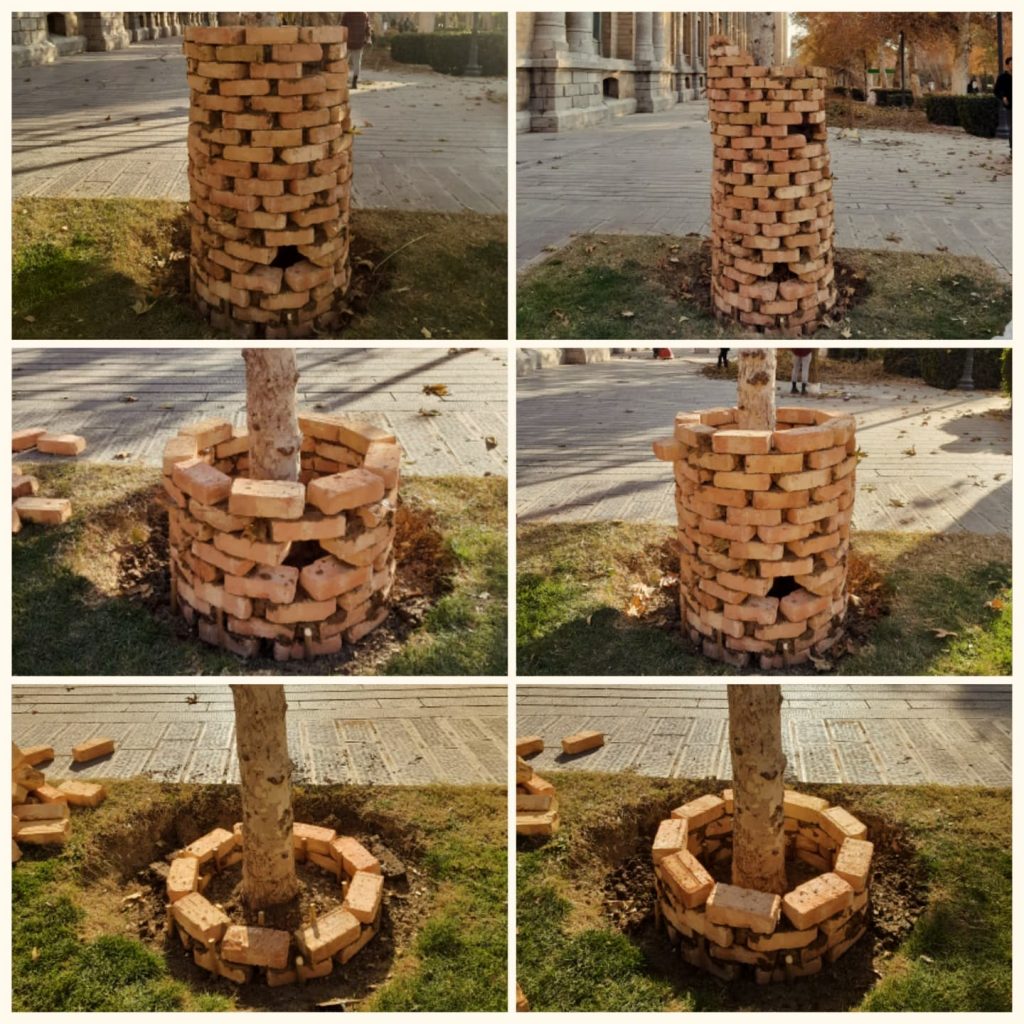
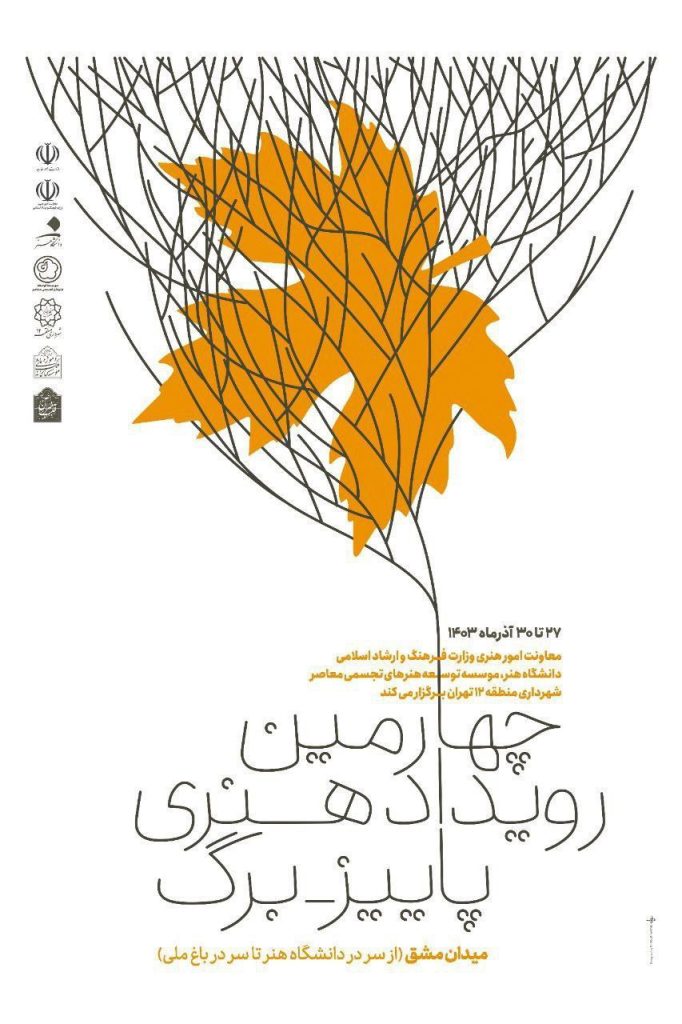
22. 12th Biennale of Ceramics – Group Exhibition – Tehran – Iran – 2025
23. Cell – Curating for Installation Group Exhibition – Shamis Art Gallery – Tehran – Iran – 2025
“Human beings experience their earliest physical and mental experiences through the body. The body sometimes perceives the world around it as a subjective entity, and at other times as an objective one. It both observes and is subject to observation. Therefore, inevitably, in order to objectify the body and the identity tied to it—considering the rules and structures of societies, governments, religions, ethnicities, geography, historical background, and gender, which have governed bodies throughout the ages—it moves, manifests, and reveals itself within the material text. It creates a work that is a product of the conditions of its existence.”

24. The Flower – Group Exhibition – Adapa Art Gallery – Tehran – Iran – 2025
The flower is the intersection point of contradictions; a metaphor for the psyche, a vivid image of longing and hope. It is both beautiful and sacred, yet also mortal and fragile… The flower is a boundary between body and soul; a suspended presence between root and flight, an echo of contrast: delicate yet transient, serene yet expressive. Perhaps it is these very contradictions that transform the flower into a mirror of our regrets and desires; a reflection of love, life, and eternity within the heart of impermanence.
25. Unbounded Territories – Group Exhibition – Evanston Art Center – Illinois – USA – 2025
Unbound Territories invites you to question the spaces we inhabit and envision radical alternatives. Drawing inspiration from Borges’s “The Library of Babel,” the exhibition transposes the author’s infinite yet fragmented universe of knowledge into our lived reality. Just as Borges’s labyrinthine library reflects the paradoxes of human conditions, Unbounded Territories posits that our contemporary spaces—private, public, and national—are arenas where multiple, intersecting struggles materialize. Unbound Territories exposes how our surroundings shape society’s valuation of human work, often dulling our senses and alienating us from our labor. By highlighting the clash between human creativity’s boundless potential and the constraints of capitalist spatial arrangements, Unbounded Territories encourages the participants to reimagine our relationship with space. We prompt you to consider how collective action might reconfigure our material conditions, dismantle oppressive structures, and foster new social organizations that awaken our senses and reclaim our full human potential.
